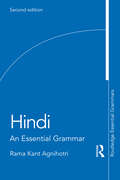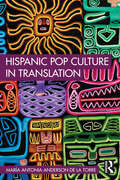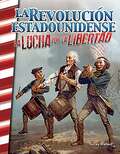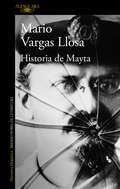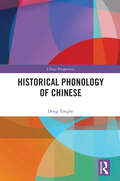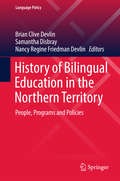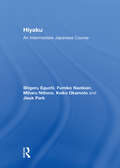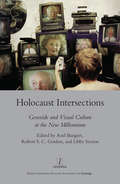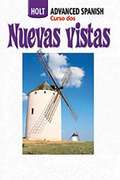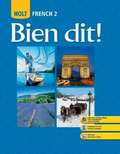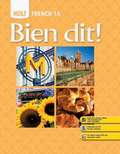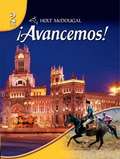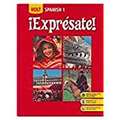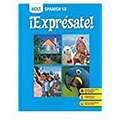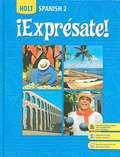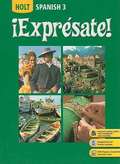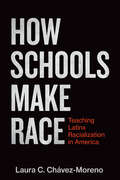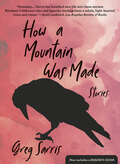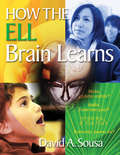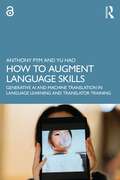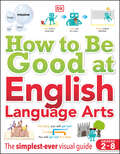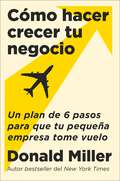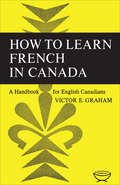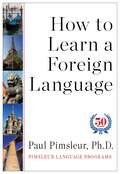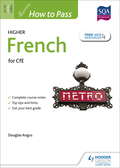- Table View
- List View
Hindi: An Essential Grammar (Routledge Essential Grammars)
by Rama Kant AgnihotriHindi: An Essential Grammar is a practical reference guide to the core structures and features of modern Hindi. Assuming no prior knowledge of Hindi grammar, this book avoids jargon and overly technical language as it takes the student through the complexities of Hindi grammar in short, readable sections. Suitable for either independent study or for students in schools, colleges, universities and adult education classes, key features include: Full examples throughout in both Devanagari and Roman script with a gloss in English Glossary of technical terms and detailed subject index Cross referencing between sections Authentic material provided in the appendix demonstrating grammar usage Hindi: An Essential Grammar will help students, in both formal and non-formal education and of all levels to read, speak and write the language with greater confidence and accuracy. The revised edition rectifies the printing errors inadvertently made in the first edition; it also further clarifies several other issues including Hindi word order flexibility, compound nouns, ergativity, pronominal usage and polite communication.
Hispanic Pop Culture in Translation
by María Antonia Anderson de la TorreHispanic Pop Culture in Translation is a systematic course that combines both relevant theoretical background and practical guidance to enable advanced students of Spanish to confidently translate pop culture texts. Through analysis of the current state of dubbing, subtitling, and translation in the modern world, this innovative and engaging course makes students aware of the political, cultural, social, and historical implications of linguistic cross-cultural interactions in pop culture. Each chapter includes a variety of activities which prepare students for a final translation project. The practical tasks allow students to practice and refine their craft as translators and prepare for a career as a translator. Hispanic Pop Culture in Translation can be used as a core textbook for courses that focus on pop culture translation, or as a supplementary resource for general translation courses.
Historia de La Revolución estadounidense La lucha por la libertad: Libro en español para niños
by Torrey MaloofGive ESL students a truly unique reading and learning experience through primary sources! This history book for kids helps students make personal connections to history. <P><P> Primary sources provide insight into what life was like during the American Revolution. Students will learn about Paul Revere, the minutemen, Valley Forge, and the battles of Lexington, Concord, and Bunker Hill. Features include:
Historia de Mayta (Biblioteca Breve Ser.)
by Mario Vargas Llosa«La historia de Mayta es incomprensible separada de su tiempo y lugar, aquellos años en que, en América Latina, se hizo religión la idea, entre impacientes, aventureros e idealistas (yo fui uno de ellos), de que la libertad y la justicia se alcanzarían a tiros de fusil.» Mario Vargas Llosa Mario Vargas Llosa nos arrastra con su prosa hacia Mayta, protagonista de una intentona revolucionaria trotskista que en la novela acontece en 1958. La reconstrucción de la historia de este personaje se lleva a cabo mediante los testimonios de aquellos que lo conocieron y la posterior confrontación de este relato, cargado de subjetivismo, con la realidad. El resultado solo podrá tener un claro regusto amargo y tragicómico. Así, aparte de conocer a un hombre, personificación de la marginalidad, hijo de un periodo de pasiones políticas y conflictos ideológicos, sabremos también de un momento clave en el devenir de América Latina, un tiempo sombrío, tiempo de reivindicación violenta de los deseos y los derechos, y, finalmente, comprenderemos las limitaciones de la verdad. Porque la historia procede de las ficciones personales. Y el lenguaje de la ficción traiciona inevitablemente la experiencia real. A menudo infravalorada, esta novela va mucho más allá de las lecturas políticas que en su momento la redujeron. Hoy, además, nos deleita con toda la altura literaria de Mario Vargas Llosa.
Historical Phonology of Chinese (China Perspectives)
by Dong TongheAs an important introduction to the phonological history of Chinese, this title explores the phonological systems of the Chinese language and explains basic concepts, materials and methodologies. Unlike many historical accounts, this book adopts a reverse chronological sequence – starting with the phonology of Modern Mandarin and modern Chinese dialects, then looking back on Early Mandarin and Middle Chinese, and ultimately ending with Old Chinese phonology. This arrangement makes the book reasonably approachable to both professionals and general readers, building up knowledge along an ascending order of difficulty, from familiar, observable facts to theoretical, speculative hypotheses. Based on the extant studies and two essential types of rhyme materials, the book reconstructs the speech sounds of Middle and Old Chinese, in terms of initials, finals and tones. It also analyses the transition and evolution of phonological systems of the Chinese language in different periods. Marking the beginning of historical Chinese phonological studies and drawing on modern Western linguistics, this book will serve as an essential read for students and researchers of Chinese language, Chinese linguistics and especially historical Chinese phonology.
History of Bilingual Education in the Northern Territory
by Brian Clive Devlin Samantha Disbray Nancy Regine Friedman DevlinThis book provides the first detailed history of the Bilingual Education Program in the Northern Territory of Australia. This ambitious and innovative program began in 1973 and at different times it operated in English and 19 Aboriginal languages in 29 very remote schools. The book draws together the grassroots perspectives of Indigenous and non-Indigenous practitioners and researchers. Each chapter is based on rich practitioner experience, capturing bottom-up aspirations, achievements and reflections on this innovative, yet largely undocumented language and education program. The volume also makes use of a significant collection of 'grey literature' documents to trace the history of the program. An ethnographic approach has been used to integrate practitioner accounts into the contexts of broader social and political forces, education policy decisions and on-the-ground actions. Language in education policy is viewed at multiple, intersecting levels: from the interactions of individuals, communities of practice and bureaucracy, to national and global forces. The book offers valuable insights as it examines in detail the policy settings that helped and hindered bilingual education in the context of minority language rights in Australia and elsewhere.
Hiyaku: An Intermediate Japanese Course
by Keiko Okamoto Shigeru Eguchi Fumiko Nazikian Miharu Nittono Jisuk ParkHiyaku: An Intermediate Japanese Course provides a progressive intermediate course in Japanese, incorporating modern teaching methods and practicing all four language skills. Hiyaku provides content-based instruction, with authentic and semi-authentic dialogues and readings, all carefully selected to instruct and inspire students as they learn Japanese. Key features of the textbook include: highly structured chapters, beginning with warm-up exercises followed by focused practice of each of the four skills gradual introduction to increasingly authentic materials content taken from original Japanese sources such as books, TV programs, magazines, newspapers and websites extensive audio material provided as FREE MP3 files on a companion website instructor’s materials, including PowerPoint files provided through the companion website. Hiyaku does not simply teach language and basic cultural points: it also helps students gain a holistic understanding of Japanese society and history, and provides the necessary foundation for the advanced study of Japan and its language.
Holocaust Intersections: Genocide and Visual Culture at the New Millennium
by Axel BangertRecent representations of the Holocaust have increasingly required us to think beyond rigid demarcations of nation and history, medium and genre. Holocaust Intersections sets out to investigate the many points of conjunction between these categories in recent images of genocide. The book examines transnational constellations in Holocaust cinema and television in Europe, disclosing instances of border-crossing and boundary-troubling at levels of production, distribution and reception. It highlights intersections between film genres, through intertextuality and pastiche, and the deployment of audiovisual Holocaust memory and testimony. Finally, the volume addresses connections between the Holocaust and other histories of genocide in the visual culture of the new millennium, engaging with the questions of transhistoricity and intercultural perspective. Drawing on a wide variety of different media - from cinema and television to installation art and the internet - and on the most recent scholarship on responses to the Holocaust, the volume aims to update our understanding of how visual culture looks at the Holocaust and genocide today. With the contributions: Robert S. C. Gordon, Axel Bangert, Libby Saxton- Introduction Emiliano Perra- Between National and Cosmopolitan: 21st Century Holocaust Television in Britain, France and Italy Judith Keilbach- Title to be announced Laura Rascaroli- Transits: Thinking at the Junctures of Images in Harun Farocki's Respite and Arnaud des Pallieres's Drancy Avenir Maxim Silverman- Haneke and the Camps Barry Langford- Globalising the Holocaust: Fantasies of Annihilation in Contemporary Media Culture Ferzina Banaji- The Nazi Killin' Business: A Post-Modern Pastiche of the Holocaust Matilda Mroz- Neighbours: Polish-Jewish Relations in Contemporary Polish Visual Culture Berber Hagedoorn- Holocaust Representation in the Multi-Platform TV Documentaries De Oorlog (The War) and 13 in de Oorlog (13 in the War) Annette Hamilton- Cambodian Genocide: Ethics and Aesthetics in the Cinema of Rithy Panh Piotr Cieplak, Emma Wilson- The Afterlife of Images
Holt Advanced Spanish, Curso dos Nuevas vistas
by Holt, Rinehart and Winston StaffNIMAC-sourced textbook
Holt French 2, Bien dit!
by John Demado Marie Ponterio Robert Ponterio Séverine ChampenyNIMAC-sourced textbook
Holt French: 1A (Bien Dit!)
by Marie Ponterio Robert Ponterio Séverine Champeny John DeMadoNIMAC-sourced textbook
Holt McDougal ¡Avancemos!, Dos 2 (¡avancemos!)
by Estella Gahala Patricia Hamilton Carlin Audrey L. Heining-BoyntonNIMAC-sourced textbook
Holt Spanish 1, ¡Expresate!
by Ana Beatriz Chiquito John Mcminn Nancy Humbach Stuart Smith Sylvia Madrigal VelascoNIMAC-sourced textbook
Holt Spanish 1B, iExpresate!
by Ana Beatriz Chiquito John Mcminn Nancy Humbach Stuart Smith Sylvia Madrigal VelascoNIMAC-sourced textbook
Holt Spanish 2, ¡Exprésate!
by John Mcminn Nancy Humbach Stuart Smith Sylvia Madrigal VelascoNIMAC-sourced textbook
How Schools Make Race: Teaching Latinx Racialization in America (Race and Education)
by Laura C. Chávez-MorenoAn investigation into how schooling can enhance and hinder critical-racial consciousness through the making of the Latinx racialized group
How a Mountain Was Made: Stories
by Greg SarrisIn the tradition of Calvino's Italian Folktales, Greg Sarris, author of the award-winning novel Grand Avenue, turns his attention to his ancestral homeland of Sonoma Mountain in Northern California. In sixteen interconnected original stories, the twin crows Question Woman and Answer Woman take us through a world unlike yet oddly reminiscent of our own: one which blooms bright with poppies, lupines, and clover; one in which Waterbug kidnaps an entire creek; in which songs have the power to enchant; in which Rain is a beautiful woman who keeps people's memories in stones. Inspired by traditional Coast Miwok and Southern Pomo creation tales, these stories are timeless in their wisdom and beauty, and because of this timelessness their messages are vital and immediate. The figures in these stories ponder the meaning of leadership, of their place within the landscape and their community. In these stories we find a model for how we can all come home again. At once ancient and contemporary, How a Mountain Was Made is equally at home in modern letters as the ancient story cycle. Sarris infuses his stories with a prose stylist's creativity and inventiveness, moving American Indian literature in a new and emergent direction.
How the ELL Brain Learns
by Dr David A. SousaRaise your ELL success quotient and watch student achievement soar! How the ELL Brain Learns combines current research on how the brain learns language with strategies for teaching English language learners. Award-winning author and brain research expert David A. Sousa describes the linguistic reorganization needed to acquire another language after the age of 5 years. He supplements this knowledge with immediately applicable tools, including: A self-assessment pretest for gauging your understanding of how the brain learns languages Brain-compatible strategies for teaching both English learners across content areas An entire chapter about how to detect English language learning problems
How to Augment Language Skills: Generative AI and Machine Translation in Language Learning and Translator Training
by Anthony Pym Yu HaoHow to Augment Language Skills outlines ways in which translators and language providers can expand their skillset and how translation technologies can be integrated into language learning and translator training.This book explains the basics of generative AI, machine translation, and translation memory suites, placing them in a historical context and assessing their fundamental impacts on language skills. It covers what to teach in a specific context, how to teach it, how to assess the result, and how to set up lively class discussions on the many problematic aspects. The exploratory empirical approach is designed to reach across several divides: between language education and translation studies, between technology designers and users, between Western and Asian research, and between abstract ideas and hands-on practice.Features include: Fifty-seven technology-related activities for the language and/or translation class. Recent research on the capacities of generative AI. Examples of how to conduct a needs analysis in the Higher Education context. Comparisons of the main teaching methods. Ways to assess the use of technologies. Examples in Chinese, Spanish, Catalan, French, and German. A full glossary explaining the key terms in clear language. Drawing on years of classroom experience, Pym and Hao illustrate how these skills can be taught in a range of classroom and online activities, making this essential reading for teachers and researchers involved in the teaching of languages and the training of translators.
How to Be Good at English Language Arts: The Simplest-ever Visual Guide (DK How to Be Good at)
by DKIdeal for home learning, this simple and inspirational book has everything you need to get to grips with grammar and punctuation, and master essential reading and writing skills.Need help telling your adjectives from your adverbs? Struggling to work out what that poem is really about, or where to begin with your essay? Then this may be the book for you! How to be Good at English Language Arts uses short, straightforward explanations and clear graphics to shed light on the trickiest of topics, making this language-learning book the perfect guide to understanding and using the English language.Illustrated examples make daunting grammar accessible and fun, and help develop an understanding that can be applied to school studies. Annotated texts complement concise, practical guidance to support students in developing sound analytical and writing skills. The carefully selected reading recommendations will inspire reading for pleasure, while clear links between topics will ensure that students not only understand language techniques but know how to apply them effectively.Dive into the pages of this great grammar guide for kids to discover: -Visual explanations make concepts easy to grasp at first glance-Every topic is broken down into short sections of text written in simple language-Annotated texts provide students with clear guidance on identifying and applying language techniques effectively-&“Further reading&” features encourage reading for pleasure-&“World of words&” features bring English to life, connecting language on the page with language in the real world How to be Good at English Language Arts will inspire students to uncover and enjoy the art and power of language, supporting them on their way to becoming confident and accomplished readers, writers, and speakers. The highly visual approach alongside clear, short explanations breaks down the language and makes the subject easy to understand, whilst also supporting education curricula around the world for children aged 9-12; it is also suitable for foreign students studying English language and literature, and an ideal resource for children studying at home.
How to Grow Your Small Business \ Cómo hacer crecer tu negocio (Sp. ed.): Un plan de 6 pasos para que tu pequeña empresa tome vuelo
by Donald Miller«Si buscabas un plan sencillo y probado para hacer crecer tu negocio, ahora lo tienes en tus manos». —LEWIS HOWES, autor de La escuela de la grandezaBestseller del Wall Street Journal.Dirigir un negocio suele alejarse mucho de lo que nos imaginamos al emprender. Creemos que lo más difícil es dar el primer paso y empezar a vender, pero nadie nos advierte que la mayoría de las pequeñas empresas quiebra por no saber gestionar ese crecimiento. Si tu negocio te pide a gritos un plan para crecer de manera segura y confiable, pero no sabes por dónde comenzar, llegaste al lugar indicado.Cómo hacer crecer tu negocio es un sencillo manual de 6 pasos que te ayudará a profesionalizar tu operación y aumentar tus ganancias e ingresos, sin importar el tipo o el tamaño de tu compañía. Diseñado y probado por el exitoso empresario y autor bestseller Donald Miller, este novedoso sistema hará que tu empresa tome vuelo, y que tú ganes dinero, tranquilidad y tiempo para dedicarte a lo que realmente te gusta.Aquí aprenderás sobre:Liderazgo: cómo crear y ejecutar un plan de crecimiento fácil y confiable.Marketing: cómo atraer, expandir y mantener tu base creciente de clientes ideales.Ventas: cómo dejar de vender e invitar a los clientes a formar parte de una historia.Optimización del producto: tácticas para identificar áreas en las que puedes aumentar la capacidad para servir mejor a tu mercado.Operaciones: la mejor manera de estructurar tu negocio es maximizar tus habilidades y delegar las áreas que deben ser manejadas por otra persona.Flujo de caja: cómo gestionar el dinero que ingresa para que este crezca en lugar de desaparecer misteriosamente.Entonces, ¿estás listo para despegar?———“If you're looking for an easier, proven plan to grow your business, you've found it." —Lewis Howes, author of the New York Times bestseller, The School of GreatnessA Wall Street Journal Bestseller.Running a business often turns out to be very different from what we imagine when we first start out. We think the hardest part is taking that first step and igniting sales. However, everybody forgets to mention that most small businesses fail because they don’t know how to manage growth. If your small business pleads for a plan to grow safely and reliably, but you don’t know where to start, you’ve come to the right place.How to Grow Your Business is a simple 6-step guide that will help you professionalize your operations and increase your profits and revenue, no matter the type or size of your company. Designed and tested by successful entrepreneur and bestselling author Donald Miller, this innovative system will help your business take off, while you gain money, peace of mind, and time to focus on what you truly love. So, are you ready to take off?
How to Learn French in Canada: A Handbook for English Canadians
by Victor E GrahamIt is well known that even after several years' exposure to high-school French, most English Canadians remain unable to speak the language. It is equally well known that many French Canadians are bilingual. One of the more obvious explanations for this relative deficiency on the part of the English Canadian is his lack of opportunities to use the French language in day-to-day situations, and, conversely, the French Canadian's need to know the second language, too often perhaps for economic reasons. Professor Graham's book gives useful and practical suggestions on how to go about becoming fluent in French. It offers not a course of instruction, but a listing of practical ways of applying oneself to a study of the language. There is specific, up-to-date information and advice regarding services provided by the governments of Quebec and France, courses offered in various Canadian communities, clubs and societies, correspondence courses, universities and summer schools, and language laboratories. A feature which will be especially helpful for those in remote areas is the listing of publications (books, newspapers, and periodicals), music and songs, records, films, and radio and television programmes which provide instruction in French. The reader will quickly see that the available means are much more varied than he realizes, and it is in providing this concise, convenient enumeration of them that Professor Graham performs a great service. Any adult who is reasonably proficient in French, but wishes to improve, will find this a practical and useful guide to ways of making a personal contribution to bilingualism in Canada. This study has been prepared under the sponsorship of the Canadian Association for Adult Education.
How to Learn a Foreign Language
by PimsleurIn this entertaining and groundbreaking book, Dr. Paul Pimsleur, creator of the renowned Pimsleur Method, the world leader in audio-based language learning, shows how anyone can learn to speak a foreign language.If learning a language in high school left you bruised, with a sense that there was no way you can learn another language, How to Learn a Foreign Language will restore your sense of hope. In simple, straightforward terms, Dr. Pimsleur will help you learn grammar (seamlessly), vocabulary, and how to practice pronunciation (and come out sounding like a native). The key is the simplicity and directness of Pimsleur’s approach to a daunting subject, breaking it down piece by piece, demystifying the process along the way. Dr. Pimsleur draws on his own language learning trials and tribulations offering practical advice for overcoming the obstacles so many of us face.Originally published in 1980, How to Learn a Foreign Language is now available on the 50th anniversary of Dr. Pimsleur’s publication of the first of his first audio courses that embodied the concepts and methods found here. It's a fascinating glimpse into the inner workings of the mind of this amazing pioneer of language learning.
How to Pass Higher French for CfE
by Douglas AngusGet your best grade with the SQA endorsed guide to Higher French for CfE.This book contains all the advice and support you need to revise successfully for your Higher (for CfE) exam. It combines an overview of the course syllabus with advice from a top expert on how to improve exam performance, so you have the best chance of success.- Refresh your knowledge with complete course notes- Prepare for the exam with top tips and hints on revision techniques- Get your best grade with advice on how to gain those vital extra marksYou can download free audio files for this book!Visit www.hoddereducation.co.uk/updatesandextras
